It’s hard to know which devices, brands, etc. work well with Home Assistant. Sadly manufactures slap compatible with tags for other major home automation platforms (the major ones that pay for this label so they can then sell your data…) on their boxes, but most often Home Assistant is omitted. If only there was a Home Assistant device compatibility list…
With enough time of researching a good “community consensus” can be gathered of how certain devices operate. I’m hoping to add one more voice to that pool of research. But rather than reading through post after post in Reddit, I’m hoping to give concise yet detailed reviews of the devices I’ve found to work based on my experiences in this device compatibility list. By no means will this be a comprehensive list, rather a journal of my experiences. So use it for what it’s worth.
This Home Assistant device list will include both the good, the bad, and the ugly devices based on my experiences. I don’t want to highlight only the good ones that work, but rather all devices I have experience with so you can make an educated decision on what will work for you.
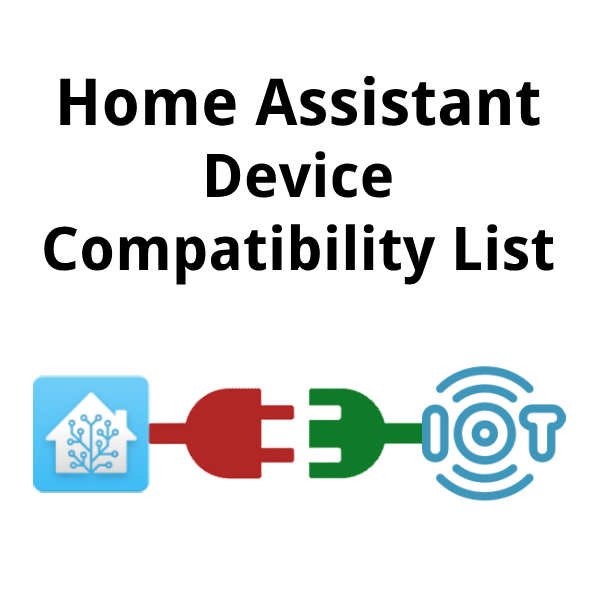
Contents
Cameras
Cameras are great to see what is happening in the home, keep track of pets and kids, or even to check to see if you remembered to closed a garage door. A smart home without cameras feels a bit incomplete, doesn’t it?
Most camera manufactures I’ve looked at want you to be connected to their ecosystem and transmit your data to their servers. My personal opinion is that I don’t want this… They offer nice home monitoring packages, intruder detection, etc. but I just don’t want video of me walking through my underwear streaming to some unknown server/service. That said, I haven’t yet found my ideal solution. I have some ideas and I’ll update this post if/when I get around to exploring that.
Eufy
- Brand: Eufy
- Model Solo IndoorCam C24
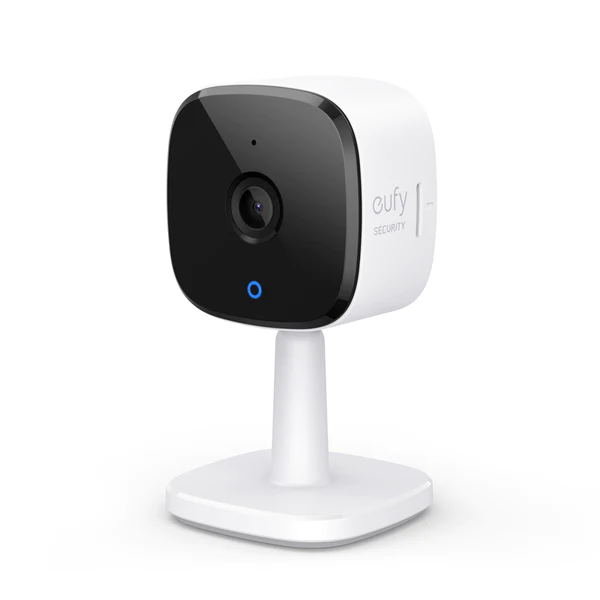
Ratings
Overall Rating
Ease of Use
Reliability
Would I Buy it Again?
❌ No
Would I Recommend to a Friend?
❌ No
Pros:
- Fair price
- Built in RTSP protocol
- Easy to integrate via WebRTC integration
- Minimal Eufy cloud connection
Cons:
- No official Home Assistant integration
- Audio doesn’t stream via RTSP into Home Assistant
- Unstable video stream
- RTSP doesn’t work with authentication enabled
Home Assistant Integration Method
Integration Protocol
RTSP
Home Assistant Integration
3rd Party Cloud Required
❌ No
The camera streams are pulled in to Home Assistant via the AlexxIT WebRTC Integration
NOTE: Eufy does offer a Home Assistant integration, however it does not support cameras at this time (June 2023).
Latest Tested Versions
Home Assistant
2022.11.5
Home Assistant Integration
3.1.0
Device Firmware
2.1.8.7
Summary:
Eufy is a comparable – but better in my mind – offering to the Wyze product line. And if you want to live in the camera providers ecosystem, it’s not a bad product. One edge Eufy has over Wyze is that it has built in RTSP protocol. However, it doesn’t stream audio on this protocol… So that’s a bit limiting and frustrating.
Now to be fully honest… this worked for a few months and then just didn’t… I believe it’s related to updating to version 3.0.0 and there were several breaking changes that I need to address but haven’t had the time to work through yet. If/when I get that sorted out I’ll update this post and my review of this product.
One of the reasons I chose to try the Eufy camera was their claims of being so secure and customer focused. But within less than a week of the device landing at my doorstep there was a report of them not properly protecting facial recognition thumbnails and other security concerns [source]. I considered returning the device but all in all this wasn’t overly scary to me I guess and thus I still explored the device.
Wyze Cameras
- Brand: Wyze
- Models Tested:

Ratings
Overall Rating
Ease of Use
Reliability
Would I Buy it Again?
❌ No
Would I Recommend to a Friend?
✅ Yes
Pros:
- Price point
- Reliable connection
Cons:
- Doesn’t really work with Home Assistant
- No RTSP
- I’ve explored some workarounds but they lead to dead ends
- The one Home Assistant integration I could find doesn’t do much
Home Assistant Integration Method
Integration Protocol
WIFI
Home Assistant Integration
None
3rd Party Cloud Required
✅ Yes
Summary
Wyze makes some quality products for a lower price point. They have shifted a bit from being a device company to a device and services company. They keep moving their cameras and other security devices towards their home monitoring service. That fills the need for some customers – I get that. Not what I’m looking for in a device that works for Home Assistant.
Additionally their devices are closed off to their ecosystem – meaning that you can only view their video streams, alerts, etc. via their app. Not a web interface – just an app. Which is nice for them to try and upsell you on their services or other devices.
While I applaud Wyze from an entrepreneurial business standpoint – I’ve seen them grow from a small device business to quite a large expanded company now – they aren’t serving the market I’m looking to be in. I wish them the best while I look for alternatives.
Contact / Door Sensors
Contact sensors are a great tool to detect when a door or window is open/closed with a contact sensor. These typically small devices can be battery powered wireless units to not create a large visual impact.
Aqara Contact Sensors
- Brand: Aqara
- Model MCCGQ11LM

Ratings
Overall Rating
Ease of Use
Reliability
Would I Buy it Again?
✅ Yes
Would I Recommend to a Friend?
✅ Yes
Pros
- This contact sensor just works once setup and configured
- Long battery life
- Acceptable Size
- Reasonable price
- Able to integrate with Home Assistant without the required Aqara Hub
Cons
- One of my devices isn’t always reliable, however is likely location related
Home Assistant Integration Method
Integration Protocol
Zigbee
Home Assistant Integration
3rd Party Cloud Required
❌ No
Integration tutorial: Aqara Contact Sensors in Home Assistant without a Hub
Latest Tested Versions
Home Assistant
2022.11.5
Home Assistant Integration
2022.11.5
Device Firmware
Unknown
Summary
The Aqara contact sensors are adhesive backed, compact in size, and use the popular Zigbee network for connection. They report an open/closed state as well as a temperature, though that’s not overly reliable. A battery level is also reported to Home Assistant. At the time of writing, they are still reporting 100%. I’m not sure if I trust that or not, but after 8 months I haven’t had to change any batteries yet.
Aqara claims that their hub is required for these devices to work. But using deCONZ and a Conbee II (tutorial) I’ve found these devices to be very reliable with the exception of one device. But I feel that is a communication issue between the device and the Conbee II – there is some interference and distance issues at play there. With this integration method I am keeping all of my sensors information local – no cloud integration at play here.
Wyze Sense v1
- Brand: Wyze
- Model SENSE v1

Ratings
Overall Rating
Ease of Use
Reliability
Would I Buy it Again?
❌ No
Would I Recommend to a Friend?
❌ No
Pros
- Works well within the Wyze ecosystem
- Small Size
Cons
- No integration to Home Assistant
- When the battery dies, it will likely kill the device
- Discontinued model, newer model (v2) requires a hub and are larger
Home Assistant Integration Method
Integration Protocol
N/A
Home Assistant Integration
N/A
3rd Party Cloud Required
✅ Yes
No Home Assistant integration is available. These devices only work with the Wyze app.
Latest Tested Versions
Home Assistant
2022.11.5
Home Assistant Integration
2022.11.5
Device Firmware
Unknown
Summary
The Wyze contact sensors don’t integrate with Home Assistant. That should be enough to deter you now. If you want to only live within the Wyze ecosystem they aren’t terrible devices – smallest sensors I’ve found I think. They do require the Wyze Bridge – which is connected to a Wyze Cam – to work.
But I’ve had many die on me. Why? Because when the battery goes bad, that can kill the entire device. [source] They did replace a few for me at one point, however others that have died were out of warranty and Wyze stopped making the v1 version.
The v2 version requires a hub, which as I understand it means you have to buy their monitoring services as well, and well, if you’ve read this far, you should have sufficient reasons to not buy this as you’re working with Home Assistant and this isn’t the device for you.
IR (Infrared)
Infrared technology has been used to control electronics from their early days. This short-range communication channel works by sending commands to a device. But it’s a one-way-street and thus no feedback of if the device state has changed is transmitted.
Broadlink RM4 Pro
See comments in Radio Frequency section.
LED Strip Lights
Govee LED Strip Lights
- Brand: Govee
- Model H61381A1
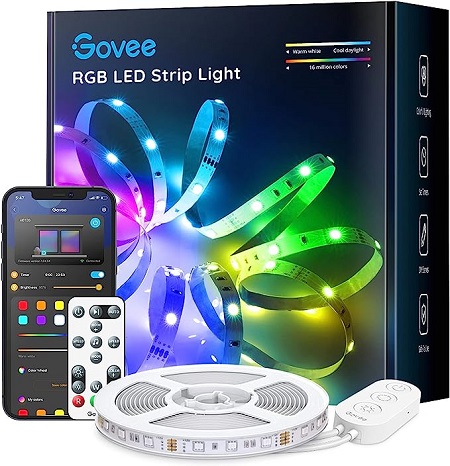
Ratings
Overall Rating
Ease of Use
Reliability
Would I Buy it Again?
✅ Yes
Would I Recommend to a Friend?
✅ Yes
Pros
- Highly Customizable light patterns
- Reliable
- Built in timer functionality
Cons
- RF Protocol
Home Assistant Integration Method
Integration Protocol
Radio Frequency (RF)
Home Assistant Integration
3rd Party Cloud Required
✅ Yes
Latest Tested Versions
Home Assistant
2022.11.5
Home Assistant Integration
2022.11.5
Device Firmware
Unknown
Summary
The GOVEE LED Strip Lights are sadly not WIFI compatible and thus there isn’t a true integration into Home Assistant. However using an RF Blaster (ie. Broadlink RM4 Pro) these can be controlled by Home Assistant. Any button on the remote could be programmed and thus integrated into Home Assistant giving the same functionality as what you get out of the box with the remote.
This model can be controlled via the phone app as well via Bluetooth. It has a built in timer so if ambient lighting is desired at specific times of the day then that can be setup in the app and there isn’t a need to get Home Assistant into the mix. To be fully honest – that’s the primary method I use these given when/how I want them to be on.
GOVEE is making some smart devices that may integrate better. I don’t have personal experience on how those function with Home Assistant and thus can’t speak to them here – but would love to hear comments if others have experience. Shop all of the GOVEE products (including smart devices) at their store.
One last comment here – I have 3 other brands of LED strip lights and they have been NOT been reliable. They have been pure frustration really. Their apps are not intuitive. The lights themselves at times have just been flakey doing unexpected behaviors, burning out, etc. In the 3 years I’ve had GOVEE lights I’ve had no issues – they just keep doing what you’d expect… lighting up!
Motion Sensors
Knowing if something is moving in a room is valuable for security and safety. (it also allows you to play “Big Brother” on your family! ha!) If motion is detected a Home Assistant automation can trigger lights to turn on, sound alarms, or send push notifications.
Aqara Motion Sensors
- Brand: Aqara
- Model RTCGQ11LM
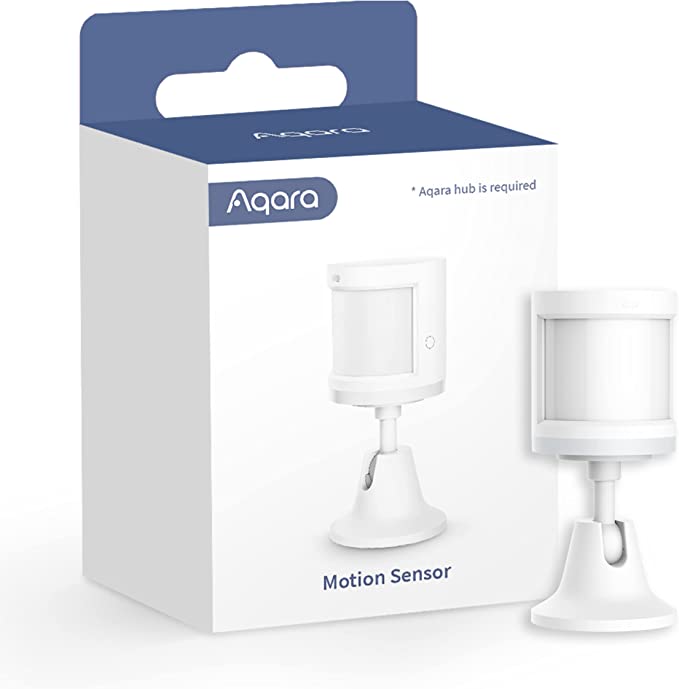
Ratings
Overall Rating
Ease of Use
Reliability
Would I Buy it Again?
✅ Yes
Would I Recommend to a Friend?
✅ Yes
Pros
- This motion sensor just works once setup and configured
- Long battery life
- Small Size
- Multi-positional stand
- Reasonable price
- Able to integrate with Home Assistant without the required Aqara Hub
Cons
- None
Home Assistant Integration Method
Integration Protocol
Zigbee
Home Assistant Integration
3rd Party Cloud Required
❌ No
Integration tutorial: Aqara Motion Sensor in Home Assistant without a Hub
Latest Tested Versions
Home Assistant
2022.11.5
Home Assistant Integration
2022.11.5
Device Firmware
Unknown
Summary
Once this motion sensor is setup it just works. This ranks as one of the most reliable devices on my network.
When motion is detected it triggers the Motion sensor to an on state for 2 minutes. The entity then switches to off. This simple on/off state/switch is perfect for powering many automations.
A Lux Meter sensor is also included. I continually remind myself that I should put this to use instead of the sunset trigger I have for a light setup… but I haven’t. So I can’t speak to how well this sensor works, but I can state that the history shows that it is doing what you’d expect.
A temperature sensor is also reported to Home Assistant however it doesn’t feel accurate – it’s higher than it should be. Probably measuring the internal components of the device?
Outlets
I love having smart outlets – they are great for controlling holiday lights, lamps, fans, etc. The only ones I’ve worked with (so far) are external plugs – they plug into the wall plug. There are options on the market to replace the wall receptacle completely and control them via Home Assistant. It likely won’t be much longer until the annoyance of the visual protuberance from the wall gets to me and I explore the built-in options… But the fact that these are portable has been useful for us.
Kasa Smart Plugs
- Brand: TP-Link
- Model Kasa HS103
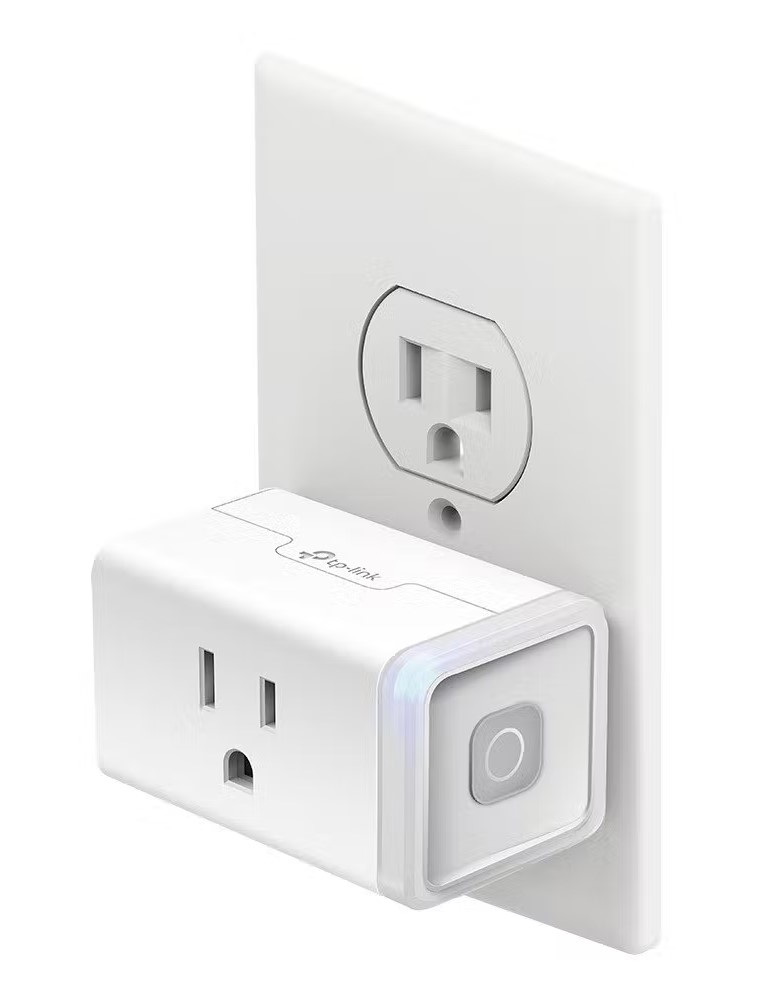
- Brand: TP-Link
- Model Kasa EP40 (Outdoor rated)
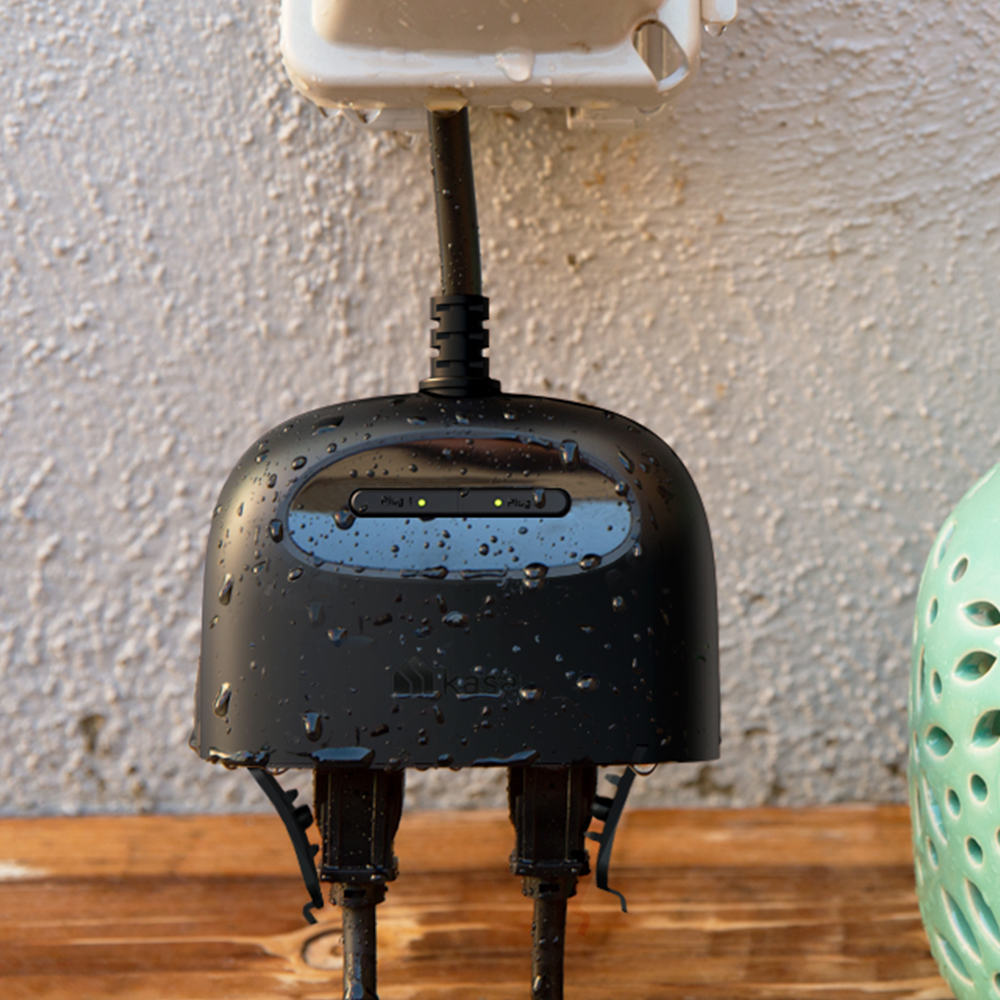
Ratings
Overall Rating
Ease of Use
Reliability
Would I Buy it Again?
✅ Yes
Would I Recommend to a Friend?
✅ Yes
Pros
- Reliable
- Portable
- Independant Control
- Easy Home Assistant Integration
Cons
- None
Home Assistant Integration Method
Latest Tested Versions
Home Assistant
2022.11.5
Home Assistant Integration
Unknown
Device Firmware
Unknown
Summary
These devices just work. Simple as that. They do require the cloud integration through TP-Link to connect to Home Assistant, but it is what it is… and TP-Link is an enterprise grade company that provides some pretty solid solutions so the trust factor is there.
Within Home Assistant each outlet is it’s own device – even each outlet from the EP40 is controllable separately. They have an on/off control for the outlet, and for the HS103 devices the LED status light can be controlled from Home Assistant as well.
RF (Radio Frequency)
Radio Frequency (RF) is a very common frequency used for so many household remotes and gadgets. It uses the 2.4 GHz and 5.8 GHz frequency spectrum. These devices typically are a one-way communication channel between the remote and the device. In terms of a smart-home setting these can be integrated but knowing the current state of the device is difficult. Regardless – the ability to integrate existing devices as opposed to replacing them with smart functionality (that often talks to 3rd party services) is a win.
Broadlink RM4 Pro
- Brand: Broadlink
- Model RM4 Pro
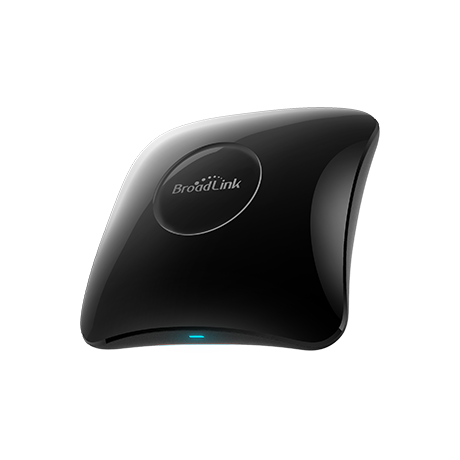
Ratings
Overall Rating
Ease of Use
Reliability
Would I Buy it Again?
✅ Yes
Would I Recommend to a Friend?
✅ Yes
Pros
- Reliable
- Universal to many applications
Cons
- Complex setup
- Many steps to configure
Home Assistant Integration Method
Integration tutorial: Use Home Assistant to Control Infrared and Radio Frequency Devices
Latest Tested Versions
Home Assistant
2022.11.5
Home Assistant Integration
2022.11.5
Device Firmware
V52079
Summary
The Broadlink RM4 Pro is great at turning many non-smart devices into “smart” devices. Well sort of smart… This creates a one-way communication channel with the device. What I mean is that you can send a signal to the device to do something, but Home Assistant will not know the current state of the device – you just assume you know the state. If you think you’re turning the TV on by sending a power button signal but the TV was already on, then it turns off. But what if this is setup for a light and someone else manually used the light without the automation knowing? You may end up with undesired results there. But depending on your desired application this can be a very powerful tool!
The setup of the RM4 Pro (or it’s little brother the RM4 Mini) is a bit more involved than most Home Assistant devices. This is due to every Infrared (or Radio Frequency) device and button having unique codes that need to be programmed into Home Assistant specific to that device. Once this onetime setup is complete, these programmed codes will be used in Services and Entities within Home Assistant to build automations and dashboards.
While the setup process is a bit more involved, using the device once integrated is just as simple as any other device in Home Assistant. Additionally the Broadlink RM4 Pro is very reliable
Temperature / Humidity Sensors
Aqara TVOC
- Brand: Aqara
- Model AAQS-S01

Ratings
Overall Rating
Ease of Use
Reliability
Would I Buy it Again?
❌ No
Would I Recommend to a Friend?
❌ No
Pros
- E Ink Display
- Air quality rating
- Able to integrate with Home Assistant without the required Aqara Hub
Cons
- Looses connection frequently
- Poor battery life
- 2 higher-priced button batteries
- Can’t change temperature output to Fahrenheit without an Aqara Hub
Home Assistant Integration Method
Integration Protocol
Zigbee
Home Assistant Integration
3rd Party Cloud Required
❌ No
Integration tutorial: Aqara Motion Sensor in Home Assistant without a Hub
Latest Tested Versions
Home Assistant
2022.11.5
Home Assistant Integration
2022.11.5
Device Firmware
Unknown
Summary
The concept of what this device can do is great – a temperature and air quality monitor with a nice E Ink display that is small and can be wall mounted (with included adhesive). And maybe had I connected this to Home Assistant with the required Aqara Hub I’d have a better experience. But in my opinion this device falls short.
Two large button batteries are required and don’t last very long compared to other Aqara devices (or any other button-batter device for that matter). Given that the E Ink display is designed to stay on all the time – knowing when the batteries are dead is simply a guessing game.
Likewise I’ve found that the device locks up frequently – only by looking at it and thinking “that temperature doesn’t feel right”. This then requires ~2 minutes of trying to get it to reboot and hopefully reconnecting to the Zigbee gateway.
And speaking of the temperature display – the on-device temperature only displays in Celsius unless you connect it to an Aqara hub where the setting can be changed (so I’ve read – I don’t own a hub). Within Home Assistant though it does report the configured temperature so if you want the Fahrenheit scale it is available there.
Why not just get an Aqara Hub? It’s more money, more devices to support, and more of my homes data relying on some outside world connection. I just want to report the temperature from one area of my home to Home Assistant so that it can decide what to do with that information – why should I send it outside my network like the hub will do?
I bought this device to help detect when we should run the AC unit to help cool off a warm bedroom. But in the struggles to get this setup I adjusted some ceiling fans and closed off some vents that didn’t need to be opened, thus redistributing air flow in the home, and the problem was solved. So this sub-par device never really was integrated into it’s full desire – which is good as it would have failed in doing what I needed it for. The batteries have since died and they haven’t been replaced… R.I.P.
BroadLink HTS2
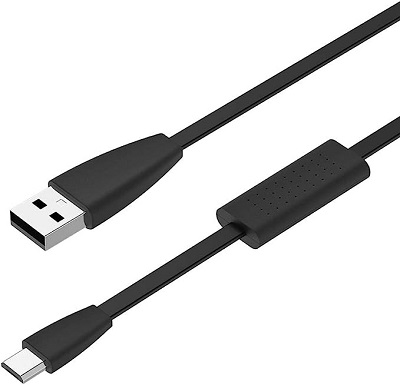
Ratings
Overall Rating
Ease of Use
Reliability
Would I Buy it Again?
✅ Yes
Would I Recommend to a Friend?
✅ Yes
Pros
- Extremely simple setup
- Just works
Cons
- Requires another device to function
- Limited location placement since it is the power cable for a device
Home Assistant Integration Method
Integration tutorial: Use Home Assistant to Control Infrared and Radio Frequency Devices
Latest Tested Versions
Home Assistant
2022.11.5
Home Assistant Integration
2022.11.5
Device Firmware
V52079
Summary
The HTS2 temperature and humidity sensor is built into a power cable for a Broadlink RM4 Mini or Pro IR/RF Blaster. The sensor communicates it’s information through the RM4’s WIFI connection to Home Assistant. So this is reliant on another device as well as a 3rd party cloud connection.
But the device connects well, is stable and has a reliable connection. Given that it’s a power cable though, the reading accuracy may vary depending on where you place the device and it’s cable. If it’s hidden behind books on a bookshelf for example, the reading will not be very accurate to the temperature in the middle of the room. But for some applications this may be accurate enough.
As for the true accuracy I have not personally done a test with another meter. I personally don’t need precision accuracy. But from what I can tell – it’s in the ballpark of the temperature I expect. So this could be a good alarm for if a furnace dies in the middle of winter and it detects a large temperature swing or below a threshold.
The temperature and humidity report to Home Assistant as independant sensors.
Sprinkler/Integration Controller
Rachio
- Brand: Rachio
- Model Rachio 3
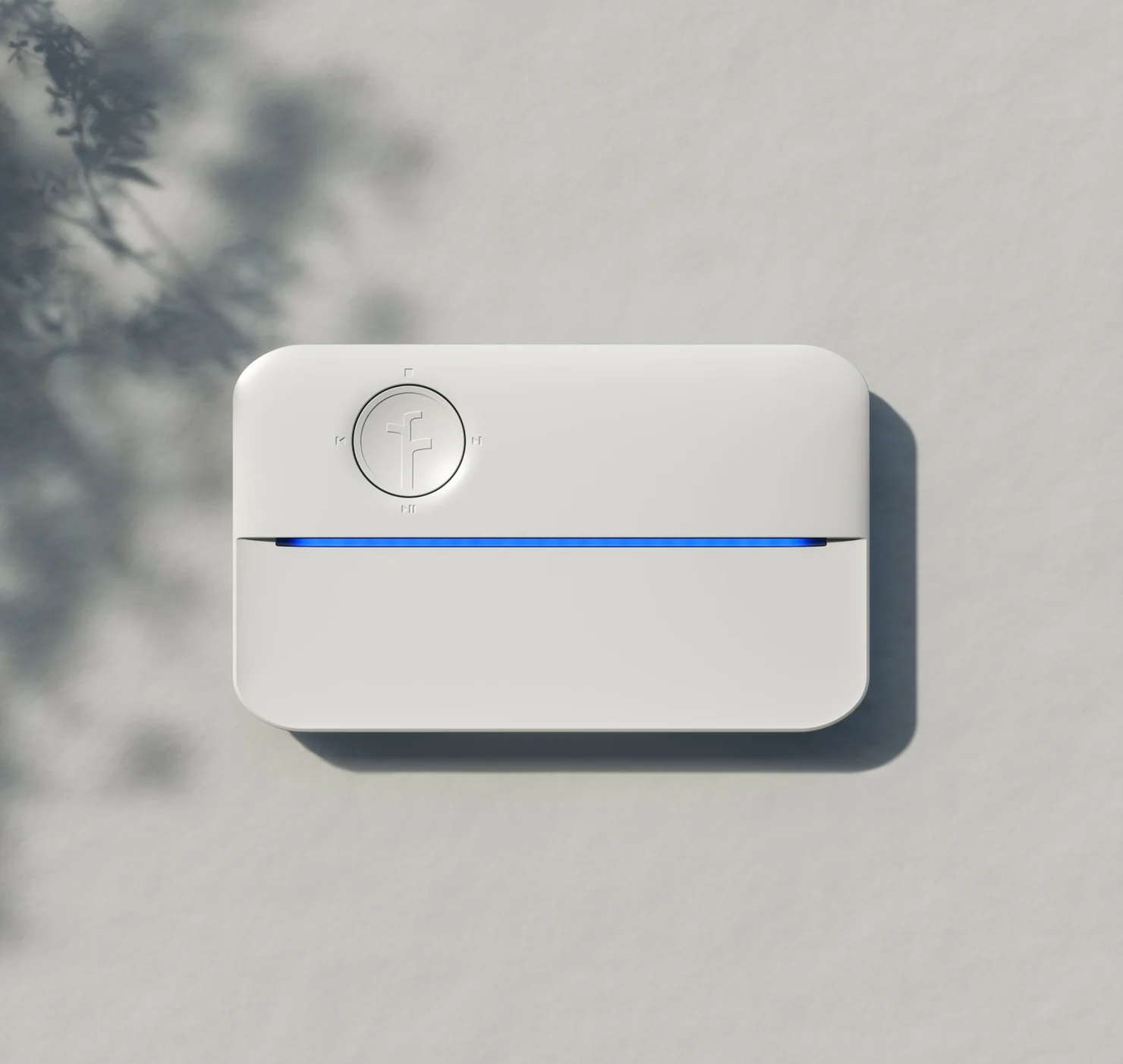
Ratings
Overall Rating
Ease of Use
Reliability
Would I Buy it Again?
✅ Yes
Would I Recommend to a Friend?
✅ Yes
Pros
- Simple setup (when replacing an existing controller)
- Reliable
- Several controls
Cons
- Relies on their 3rd party cloud service (free)
- Control panel has limited buttons
Home Assistant Integration Method
Latest Tested Versions
Home Assistant
2022.11.5
Home Assistant Integration
2022.11.5
Device Firmware
iro3-firmware-hk-5-640
Summary
Ignoring smart home concepts, this controller is very nice. I replaced an existing Hunter controller and it was as simple and matching up the wires from the old Hunter irrigation controller to the new Rachio sprinkler controller.
My existing Hunter controller had a rain sensor that I was going to use with the Rachio controller – it supports such accessories. However I learned my rain sensor was so old that the battery had died and it’s not replaceable. I could purchase a new sensor, but since the Rachio 3 is connected to weather data it knows when rain is coming and thus adjusts when rain is predicted. So the rain sensor accessory doesn’t seem very useful.
The physical control panel has one multi-purpose button which to be honest I don’t think I’ve even touched. Once it’s powered up you use the app on your phone to get it setup. That’s pretty handy as my controller isn’t located in the most convenient location (one of the reasons I wanted to get this new controller) so I could sit in a comfortable location and get the initial setup done. There is a part of the setup that requires walking around the yard to confirm all is working as you’d expect, so my resting period wasn’t too long… but I digress – the point I was trying to make is that for some users the lack of physical controls may be frustrating/limiting.
There are several entities exposed in Home Assistant. A switch for each of the zones is added with a picture of which area of your landscape it associates to. Each schedule created in Rachio is exposed as well as a switch. Standby mode is another switch and a binary sensor for rain delay is available as well.
Because the Rachio helps to conserve water usage, many cities and counties offer discount/rebate programs to incentivize you to buy a Rachio irrigation controller. Look for a discount that works in your area:
Thermostat
Honeywell
- Brand: Honeywell
- Model THX9421R5021WW
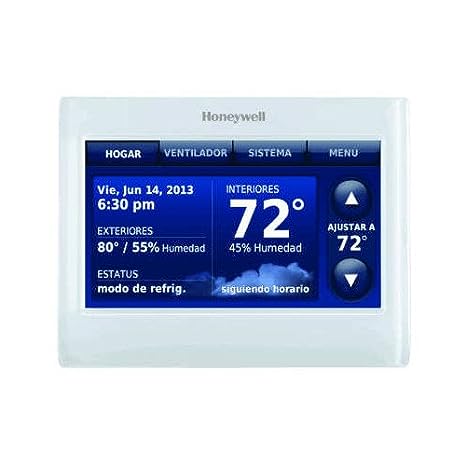
Ratings
Overall Rating
Ease of Use
Reliability
Would I Buy it Again?
✅ Yes
Would I Recommend to a Friend?
✅ Yes
Pros
- Quality smart thermostat
- Reliable
- Reputable brand
Cons
- Relies on their 3rd party cloud service (free)
Home Assistant Integration Method
Integration Protocol
WIFI
Home Assistant Integration
3rd Party Cloud Required
✅ Yes
Latest Tested Versions
Home Assistant
2022.11.5
Home Assistant Integration
2022.11.5
Device Firmware
05.00.00.00
Summary
I had this thermostat, then came into a Google Nest and hated the Nest. (this was before my Home Assistant days) When I needed new HVAC equipment in my new home I was lucky enough to get the Honeywell Prestige back into my equipment. I’m super happy about that. Then when setting up Home Assistant I naturally explored to see if this would integrate – and without question or hesitation it did. The built in provided Honeywell integration just worked.
A climate sensor is available to Home Assistant as well as outdoor sensors for Humidity and Temperature (provided via installed outdoor sensor).
Zigbee
Conbee II
- Brand: Phoscon
- Model ConBee II

Ratings
Overall Rating
Ease of Use
Reliability
Would I Buy it Again?
✅ Yes
Would I Recommend to a Friend?
✅ Yes
Pros
- Strong signal
- Robust system
- Can be run on many platforms
Cons
- Complex setup
- Occasional drop-outs
Home Assistant Integration Method
Integration tutorial: Add Zigbee to Home Assistant with ConBee II and deCONZ
Latest Tested Versions
Home Assistant
2022.11.5
Home Assistant Integration
2022.11.5
Device Firmware
26660700
Summary
Zigbee is a strong player in the IoT ecosystem due to its strong and reliable connection paired with local connectivity. Communication for most Zigbee devices live on your network only – your data stays on your network. This also improves reliability as there are fewer parts of the communication chain that could possibly fail. The biggest negative I see of Zigbee is that it’s not a native protocol built into most machines. Thus the Zigbee IoT device doesn’t have anyone to talk to…
So that’s where the ConBee II comes into play – it’s a ZigBee coordinator (or gateway) that communicates with ZigBee IoT devices. It is a USB stick that plugs into a traditional USB-A port and has a ZigBee radio built in. This serves as the hardware solution for connecting ZigBee devices to Home Assistant.
The next part is to get the ConBee II talking to Home Assistant. Like it or not, there is a middleware software solution required for this called deCONZ. Once deCONZ is installed, communication from the IoT device will be received by the ConBee II over the ZigBee protocol, which then talks to deCONZ. The last step is to install the Home Assistant deCONZ integration to pass that information to Home Assistant (and from Home Assistant back through deCONZ to the ConBee II to the IoT device).
And that’s where the biggest negative to this solution lies – the complex setup with several pieces to the integration. I do have a tutorial for how to setup the ConBee on Linux using a QNAP NAS that should help walk you through this process. Once it is all up and running you won’t notice that it’s complex anymore because it all just works. Even when I added a new device the other day, it was installed and working in Home Assistant in ~2 minutes of my work.
Devices are added into deCONZ which will then be exposed to Home Assistant as entities like any other integration.
Would I go this route again if I were building a new Home Assistant setup? Yes simply for the fact of keeping my data on my network only.
HUSBZB-1
- Brand: GoControl
- Model HUSBZB-1
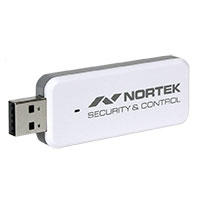
Ratings
Overall Rating
Ease of Use
Reliability
Would I Buy it Again?
❌ No
Would I Recommend to a Friend?
❌ No
Pros
- Simple integration
- Low price
- Multiple radios in one device
Cons
- Unreliable
- Frequent device drop-outs
- Slow connection
Home Assistant Integration Method
Integration Protocol
Zigbee
Home Assistant Integration
3rd Party Cloud Required
❌ No
Integration tutorial: Add Zigbee to Home Assistant with HUSBZB-1 and ZHA
Latest Tested Versions
Home Assistant
2022.11.5
Home Assistant Integration
2022.11.5
Device Firmware
Unknown
Summary
Zigbee is a great protocol – strong, fast, and local. Once integrated into Home Assistant a plethora of devices become available for integration. The HUSBZB-1 Zigbee coordinator feels like a win-win in that it is low priced and also includes a Z-Wave radio. However in my experience (and per the not recommended list of the Home Assistant devices [source]) this device is best avoided for Home Assistant setups.
The HUSBZB-1 device does integrate quickly into Home Assistant via the built-in ZHA integration. And devices will typically connect to it. But that doesn’t mean they will continue to be reliable… I had nothing but issues when I was using the HUSBZB-1. I started to doubt Zigbee – maybe my research and accolades from coworkers was all wrong. Then I bought and setup the ConBee II and confirmed that the issue wasn’t Zigbee – rather the HUSBZB-1.
Z-Wave
HUSBZB-1
See technical analysis in the HUSBZB-1 Zigbee review above.
I don’t have much experience to state here on the basis that I don’t have any Z-Wave devices to test this with…
Initially I did setup the Z-Wave integration in Home Assistant with the HUSBZB-1 and it all seemed to work just fine. But that’s about all I can speak to. And the Z-Wave integration has changed in that a Z-Wave JS server is now needed to use the Home Assistant Z-Wave integration – something that was new just as I decided to retire the HUSBZB-1.
So this review isn’t all that informative other than to say I have no use for Z-Wave and given my experience with the HUSBZB-1 for Zigbee – I don’t have much faith in the device itself.




